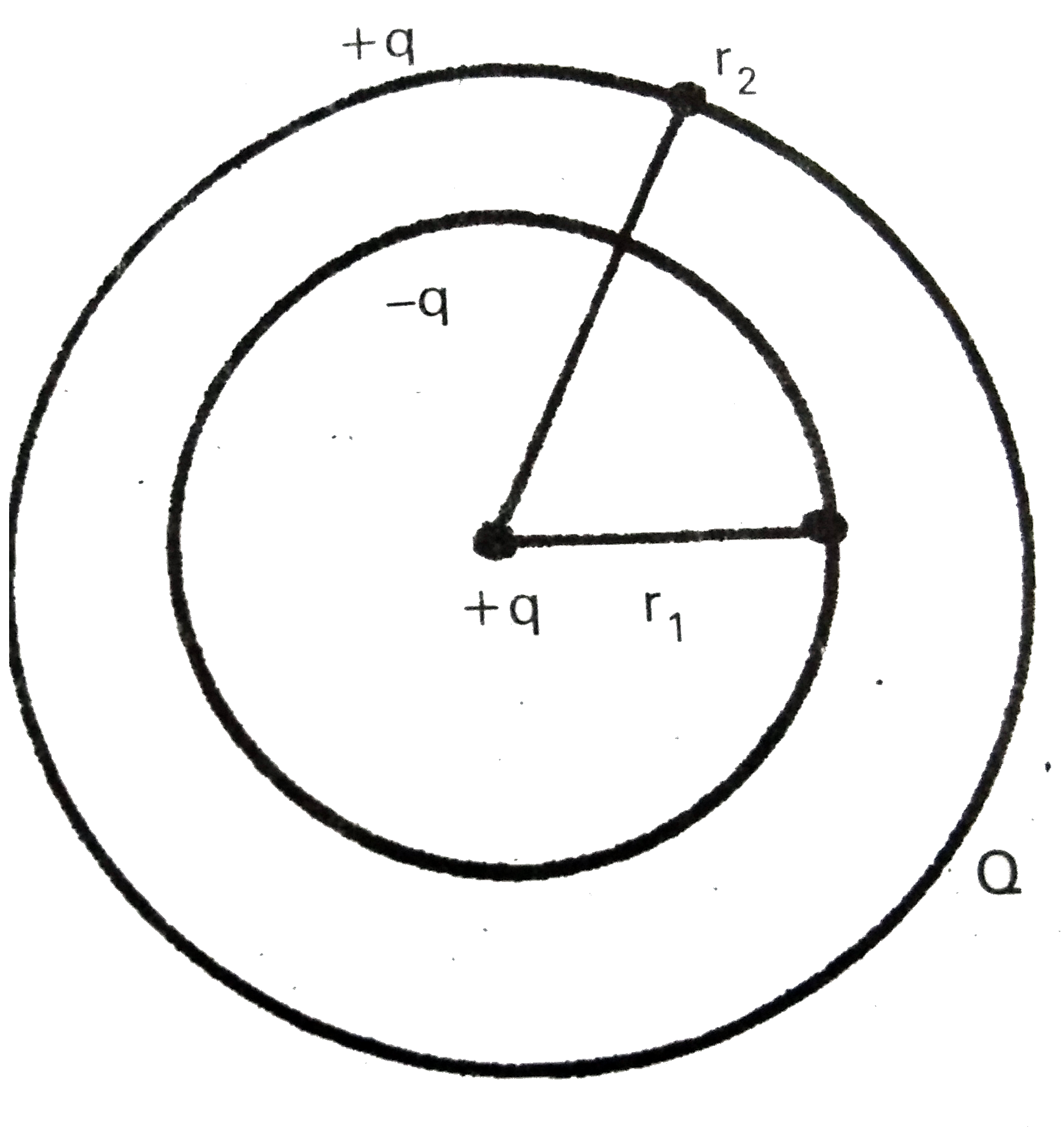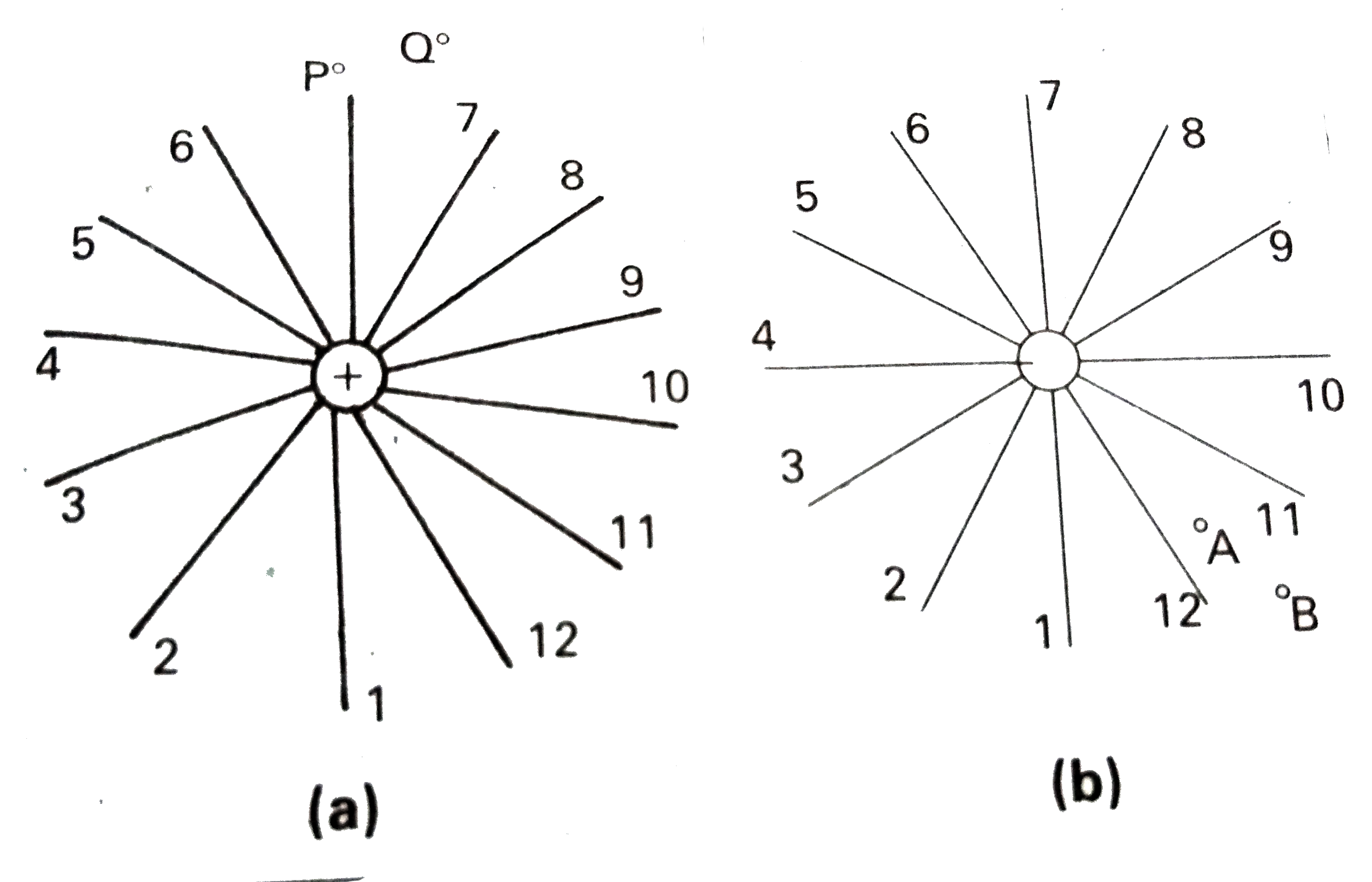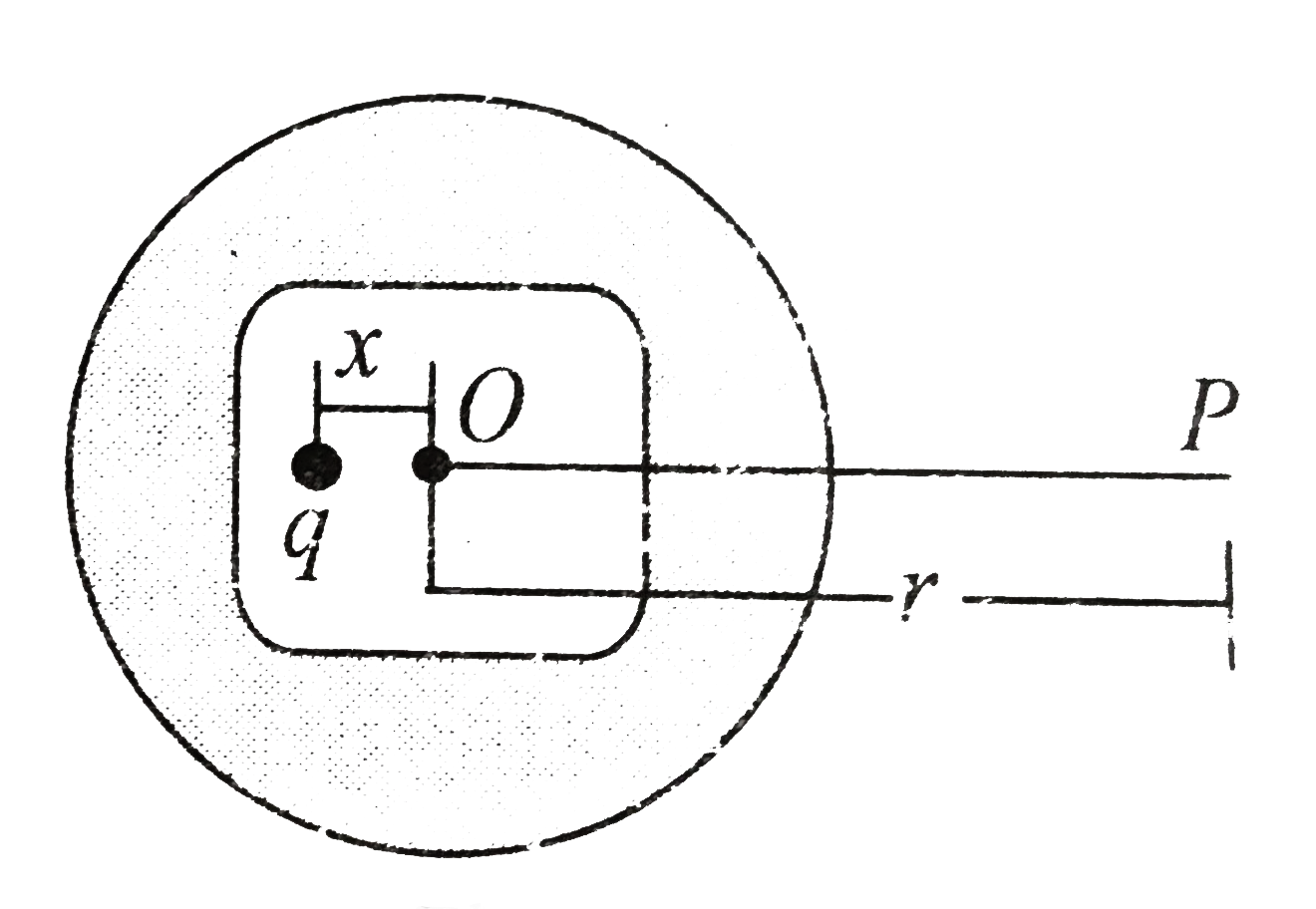Is the electric field inside a cavity (with no charge) , zero, even if the shell is not spherical, but has any irregular shape ? Explain. Solution in Telugu
Electric field intensity inside a cavity with no charge is zero , even when the shell has

any irregular shape. If we were to take a closed loop part of which is inside the cavity along a field line and the rest outside it then network done by the field in carrying a rest charge over the closed loop will not be zero. This is impossible for an electrostatic field. Hence electric field intensity inside a cavity with no charge is always zero.
Topper's Solved these Questions
- BOOK - VIKRAM PUBLICATION ( ANDHRA PUBLICATION)CHAPTER - ELECTROSTATIC POTENTIAL AND CAPACITANCEEXERCISE - Textual Examples10videos
ELECTROSTATIC POTENTIAL AND CAPACITANCE
- BOOK - VIKRAM PUBLICATION ( ANDHRA PUBLICATION)CHAPTER - ELECTROSTATIC POTENTIAL AND CAPACITANCEEXERCISE - Important Questions3videos
ELECTROSTATIC POTENTIAL AND CAPACITANCE
- BOOK - VIKRAM PUBLICATION ( ANDHRA PUBLICATION)CHAPTER - ELECTROSTATIC POTENTIAL AND CAPACITANCEEXERCISE - Textual Exercises11videos
ELECTROSTATIC POTENTIAL AND CAPACITANCE
- BOOK - VIKRAM PUBLICATION ( ANDHRA PUBLICATION)CHAPTER - ELECTROMAGNETIC WAVEEXERCISE - ADDITIONAL EXERCISES19videos
ELECTROMAGNETIC WAVE
- BOOK - VIKRAM PUBLICATION ( ANDHRA PUBLICATION)CHAPTER - MAGNETISM AND MATTEREXERCISE - Additional Exercises19videos
MAGNETISM AND MATTER
Similar Questions
Figure (a) and (b) shows the field lines of a positive and negative point charge respectively.

Give the signs of the potential difference Vp−VQ,VB−VA.02:28View SolutionThree capacitors of capacitances 1muF,2muF and 3muFare connected in parallel
(a) What is the ratio of charges ?
(b) What is the ratio of potential differences ?05:10View SolutionTwo charges 5×10−8Cand−3×10−8C are located 16 cm apart. At what point(s) on the line joining the two charges is the electric potential zero? Take the potential at infinity to be zero.
View SolutionSuppose that the electric field part of an electromagnetic wave in vacuum is E={(3.1 N/C) cos [(1.8 rad/m)y+{5.4×106 rad/s} t]} i.
What is the direction of propagation ?04:20View SolutionWhy does a paramagnetic sample display greater magnetisation (for the same magnetising field) when cooled?
03:54View SolutionA point charge q is placed with in the cavity of an electrically neutral conducting shell whose outer surface has spherical shape. Then,
 View Solution
View SolutionA spherical conducting shell of inner radius r1 and outer radius r2 has a charge Q.
(a) A charge q is placed at the center of the shell. What is the surface charge density on the inner and outer surfaces of the shell ?
(b) Is the electric field intensity inside a cavity (with no charge) zero, even if the shell is not spherical, but has any irregular shape ? Explain.03:42View SolutionA spherical conducting shell of inner radius r1 and outer radius r2 has a charge Q:
(a) A charge q is placed at the centre of the shell. What is the surface charge density on the inner and outer surfaces of the shell?
(b) Is the electric field inside a cavity (with no charge) zero even if the shell is not spherical, but has any irregular shape? Explain.05:54View SolutionA spherical conducting shell of inner radius r1 and outer radius r2 has a charge Q.
a. A charge 'q' is placed at the centre of the shell. What is the surface charge density on the inner and outer of the shell?
b. Is the electric field inside a cavity (with not charge) zero, even if the shell is not spherical, but has any irregular shape? Explain.View SolutionA spherical conducting shell of inner radius r1 and outer radius r2 has a charge Q.
(a) A charge q is placed at the centre of the shell. What is the surface charge density on the inner and outer surfaces of the shell?
(b) Is the electric field inside a cavity (with no charge) zero, even if the shell is not spherical, but has any irregular shape? Explain.View SolutionA spherical conducting shell of inner radius r1 and outer radius r2 has a charge Q.
(a) A charge q is placed at the centre of the shell. What is the surface charge density on the inner and outer surfaces of the shell?
(b) Is the electric field inside a cavity (with no charge) zero, even if the shell is not spherical, but has any irregular shape? Explain.View SolutionA spherical conducting shell of inner radius r1 and outer radius r2 has a charge Q.
(a) A charge q is placed at the centre of the shell. What is the surface charge density on the inner and outer surfaces of the shell?
(b) Is the electric field inside a cavity (with no charge) zero, even if the shell is not spherical, but has any irregular shape? Explain.02:56View SolutionA spherical conducting shell of inner radius r1 and outer radius r2 has a charge Q.
(a) A charge q is placed at the centre of the shell. What is the surface charge density on the inner and outer surfaces of the shell?
(b) Is the electric field inside a cavity (with no charge) zero, even if the shell is not spherical, but has any irregular shape? Explain.05:00View SolutionAssertion (A) : The electric field at any point inside a uniformally charged thin spherical shell is zero. Reason ® : Entire charge given to a thin spherical shll lies only on its outer surface and there is no charge present inside the shell.
02:06View SolutionA spherical conducting shell of inner radius r1 and outer radius r2 has a charge Q.
A charge q is placed at the centre of the shell. Find out the surface charge density on the inner and outer surface of the shell.
Is the electric field inside a cavity (with no charge ) zero. Independent of the fact wheather the shell is spherical or not ? Explain.03:30View Solution

